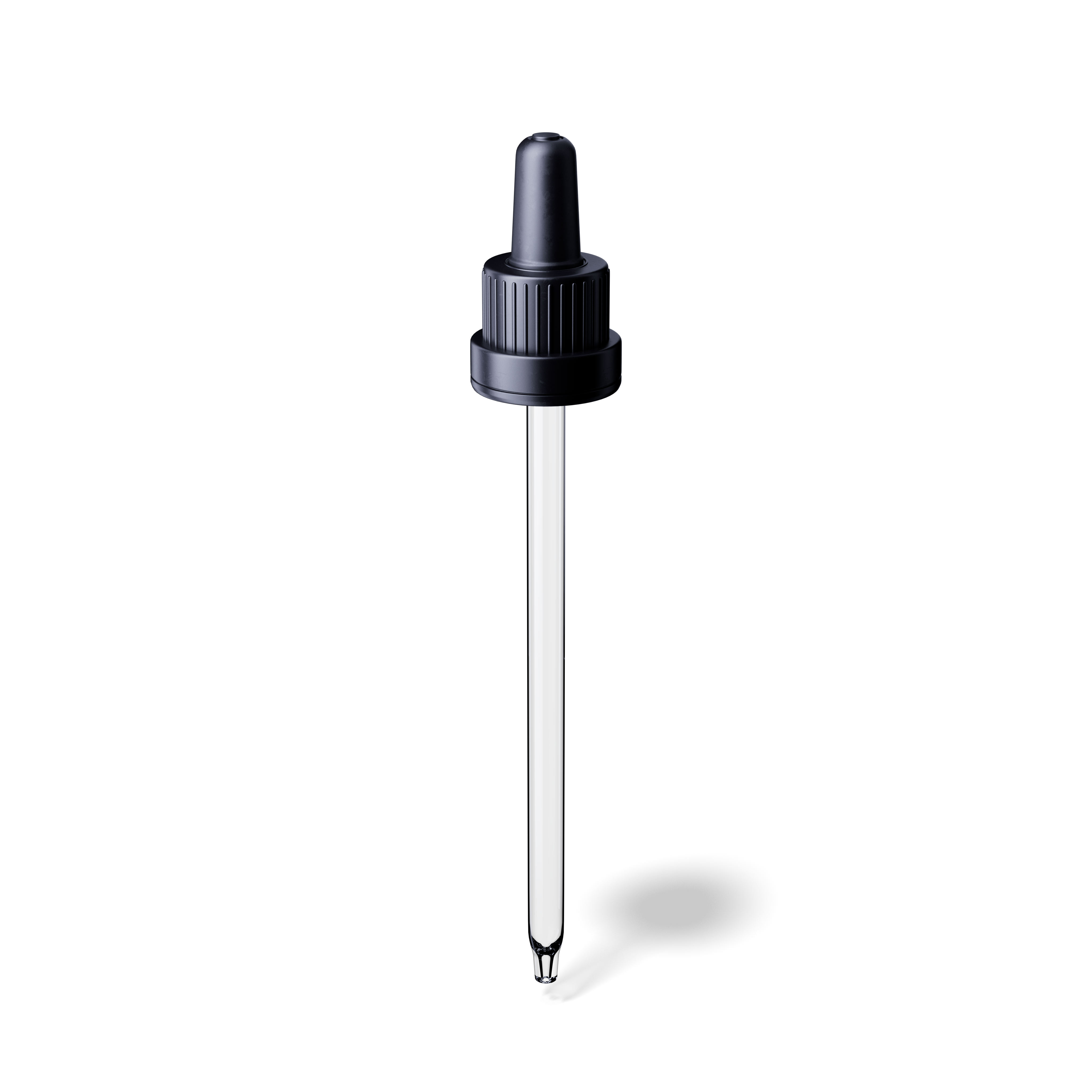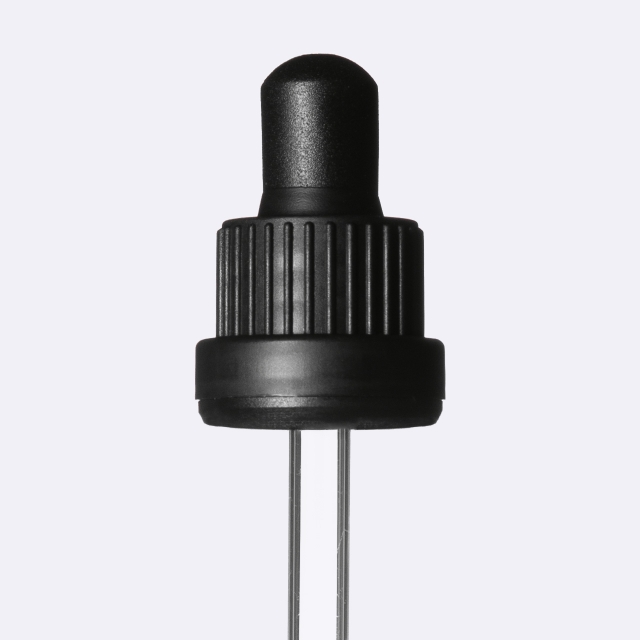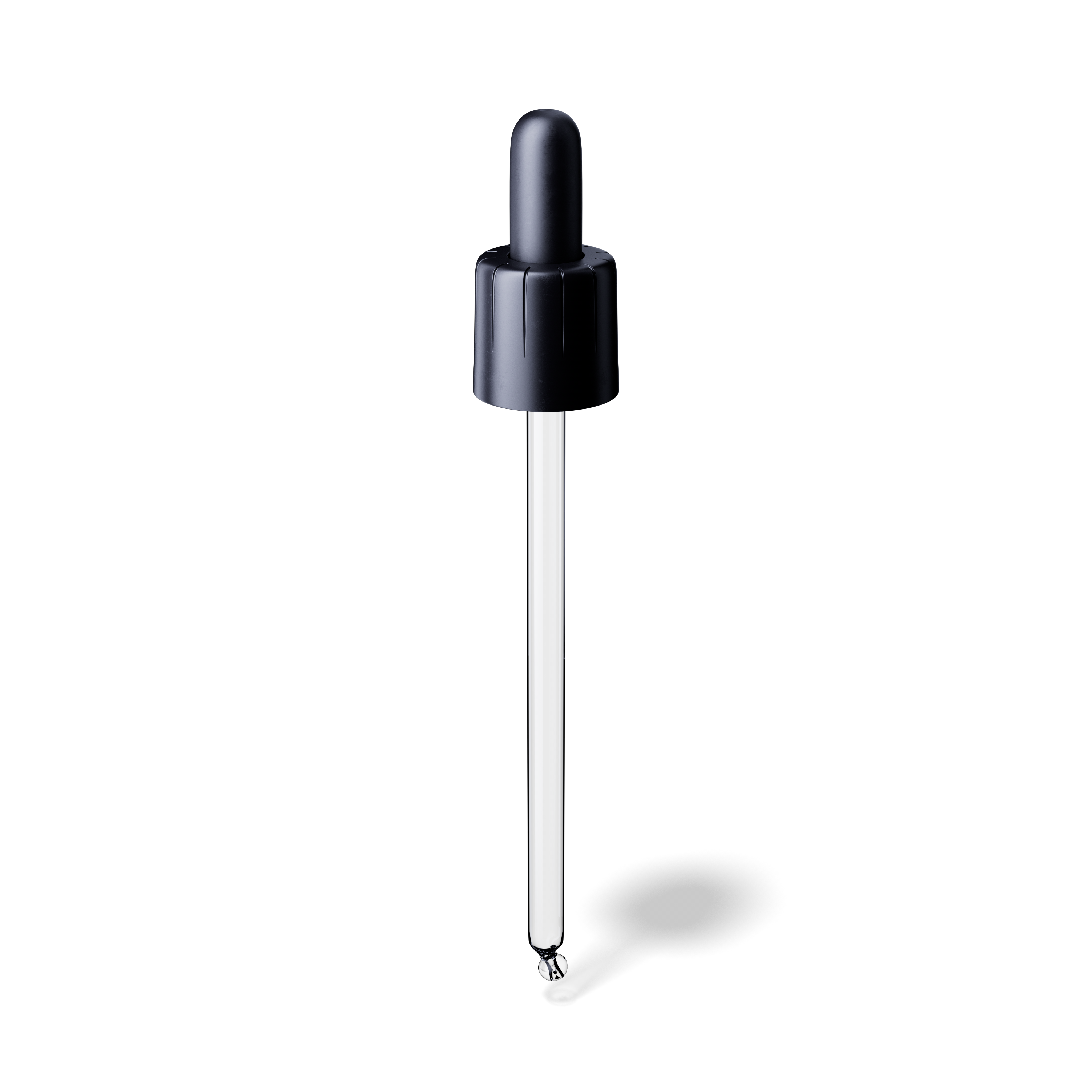Pipettes
We offer a selection of superior quality pipette droppers. Often called eye droppers, they allow you to dose a product drop by drop, applying it accurately in the exact amount and location required. A dropper also ensures that your product doesn’t get contaminated during use. Only the drop will touch the specific body part (skin, mouth, etc.). A pipette dropper generally consists of four parts: a bulb, a cap, a glass tube and a glass tip.
Child-resistant
Child-resistant packaging is created to prevent children from getting access to potentially hazardous products, like medicine. They have a special feature that provides resistance when a child wants to open a particular product.
Series II, III
The series number indicates the shape of the cap and the tamper-evident element of the dropper caps. For instance, II suggests that the closure has a tamper-evident ring attached to the closure, the cap is only made from one material/mold, and it has 4-6 ridges on the side. Series III has a thicker rim and features a more luxurious tamper-evident element. This series is made from multiple molds, which means that a different system of tamper-proofing is used, consisting of retention fingers instead of ridges on the tear strip, making it less easy to manipulate.
Tampered-evident
Tamper-evident is designed as an integral safety band that offers protection against tampering. On first opening, the consumer automatically detaches the cap from its safety band.
Let’s talk about threads
...But what exactly are threads?
Simply put, threads are the protruding lines around the neck of the bottle. They ensure that the matching closure will have a tight fit to protect your natural products from being tampered with or from leakage. The thread size depends on the size of the bottle neck as well as our closures. Our bottles and jars and corresponding closures must have matching threads. If in doubt, it’s always advisable to contact our sales department.
DIN168/GL18 (DIN18)
DIN is the industry standard for dropper bottles in Europe, and DIN18 is the German-based norm. It refers to the standard size of the neck, height, and diameter. Pipettes go hand in hand with the Orion dropper bottles up to 100 ml, featuring the DIN18 thread and a tamper-evident transfer ring. For pipettes, it’s important to note that the length of the glass cylinder also plays a crucial role in choosing the right combination.
GPI and GCMI
GPI and GCMI are the US norm for neck finishes and are followed by two numbers written like this: 22/400*. The first number indicates the neck finish diameter and is measured across the outside of the bottle’s threads. The second number refers to the height and thread style. Meaning the number of thread turns around the neck. Simply match the GPI or GCMI code listed in the product description to purchase the correct corresponding items.
* Please note that if a bottle has an additional ring on the neck, this may affect the choice of matching closure. For more details, please get in touch with your Miron representative.
TPE and NBR bulbs
TPE (thermoplastic elastomer) is the standard bulb (material) most commonly used for alcohol-based and low acidity products that cannot damage the rubber bulb. The NBR (nitrile butadiene rubber) bulb is a specialized bulb for oil-based and high acidity liquids. If you’re unsure of which bulb to choose for your product, it’s best to contact our sales department for advice. If you’re using tips that haven’t been tested and validated, we highly recommend that you always test their performance, to ensure they produce reliable results over the long run.
PP
PP (polypropylene) falls under the plastic identification code number 5. The material is easily produced and has a high degree of purity. It comes with a range of benefits: it’s difficult to break, lightweight and 100% recyclable. Due to its properties, PP is suitable for various applications, including food, cosmetic and natural healing product packaging.
Conical or straight tip vs. bent or straight ball
Conical or straight is chosen when you need volume, e.g., 0.5 ml. Conical pipettes are especially useful when you apply your substance to a specific surface (precision work). Pipettes with a bent ball are the most widely sold, as they allow for dosing a product drop by drop. The size/shape of the surface determines the size of the drop that comes out. With the ball, it’s about the average dispensing volume per drop. Also, the advantage of a bent ball is that you can empty the bottle just a little easier, because it allows you to get into the corner of the bottle neck, when you carefully rotate the container.
At Miron Violetglass we ensure that our closures always fit the corresponding bottles and jars. However, sometimes it can be a bit of a challenge to find the right closure that fits the needs of your natural ingredients. We are always happy to answer any questions you may have and to become a part of your product journey.
For more information about threads, visit our Neck Finishes Explained guide.
















